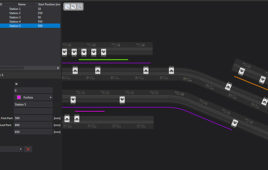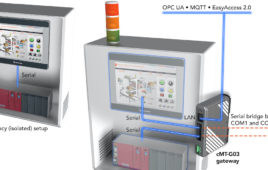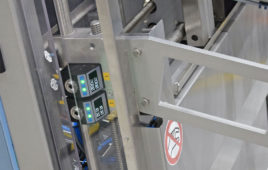
The Wayne County Airport Authority (WCAA) operates Detroit’s Metropolitan Wayne County Airport (DTW) and nearby Ypsilanti’s Willow Run Airport. Throughout its history, WCAA has invested in numerous capital improvement projects to enhance the travel experience. Recently it sought to improve behind the scenes operations to move closer towards achieving its sustainability goals. Leviton developed a plan to reduce WCAA’s energy use and operating expenses.
The WCAA is one of the busiest airport authorities in the country. It has a big job tending to the safe passage of more than 30 million annual travelers heading to 160 destinations through its 145 gates, six jet runways and two Federal Inspection Services facilities. WCAA launched a comprehensive energy audit of two of its maintenance facilities. The audit showed that it could significantly reduce its energy consumption, trim utility bills and benefit from a quick payback by installing energy-savings occupancy sensors in key areas.
Occupancy Sensors for Seamless Performance
Working alongside WCAA’s Maintenance Services Department, our lighting efficiency experts designed the installation plan, selecting the best sensor technology for each application area. A combination of passive infrared and multi-technology ceiling-mount sensors were chosen for hallways and enclosed office areas. The multi-technology sensors use both infrared and ultrasonic detection technology to respond to occupancy without false triggering and were the ideal choice in areas where additional detection was required. Over 30 occupancy sensors were installed to provide seamless performance in the open spaces and enclosed office areas of the two maintenance buildings.
Energy Harvesting Wireless for Specific Requirements
In equipping restroom and locker room areas with an automated lighting control solution, a different approach was needed. The cinderblock construction and asymmetrical layout of these areas prevented a standard hard-wired sensor installation. Fortunately, LevNet RF radio frequency-based sensors, which require no wiring, cleared this part of the project for take-off. The installation challenges posed by the block construction and floor plan of the restrooms were easily and cost- effectively overcome using energy harvesting wireless technology from EnOcean.
Solar-Powered Flexibility
The wireless implementation consisted of the installation of LevNet RF WSC15 and WSC04 ceiling-mount sensors and companion WSS10 Advanced Wall Switch Receiver units. Ideal for the most challenging retrofit applications, both sensor models feature a built-in solar cell collector that absorbs sunlight and ambient light, which are converted into the DC voltage needed to power the unit. The solar cell technology bypasses the need for batteries or wiring, enabling WCAA to save on the cost of the installation as well as on its ongoing lighting costs.
Automated Lighting Control
The Wall Switch Receivers provided a quick installation, mounting easily in single-gang wall boxes in each restroom, without any new wiring. Responding to signals from the wireless sensors, the receiver switches automatically activate lighting in the restrooms when someone enters and deactivate lighting after the room is vacated for a specified time period.
Valuable Saving Effects
The LevNet RF wireless implementation provided WCAA with a no wires, no batteries, energy management solution even in the most difficult to retrofit areas. Today, WCAA is able to benefit from the convenience of an install-and-forget, hands-free lighting control solution that helps it conserve energy and reduce operating costs.
Filed Under: M2M (machine to machine), Energy management + harvesting




